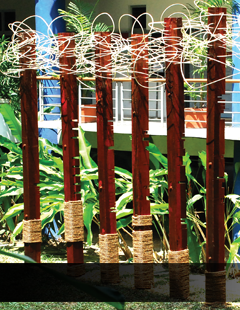
Reclaiming Urban’s Lost Landscape Spaces |
| Asraf Abdul Rahman & Suhardi Maulan |
Due to many urban problems and issues, urban designers
try to look into various ways to improve our city. Urban Furthermore, modern movement in architecture has resulted in buildings designed not in relation with the surrounding landscape. They ignore the importance of streetscapes, urban squares and garden and other important outdoor spaces, leaving voids in between buildings and many of these spaces have become lost spaces (Trancik, 1986). In addition, urban infrastructures have been designed not in coherent with urban landscapes resulting in spaces within the infrastructure left unused. Urban infrastructures are better designed so that they are not static but dynamic as well as usable for the good of urban dwellers (Hauck & Kleinekort, 2011). There is also a call to turn our infrastructure from grey to greener concept (Center for Green Infrastructure, 2011). The lack of greenery in our urban environment has been linked with stress and urban dwellers’ inability to cope with many demanding task of urban life (Suhardi, 2004; Ulrich, 1983). Without landscape, parks or greeneries in the cities, the cities will be dull and chaotic. It is due to the fact that they could provide fresh air, place contemplation, socialisation and relaxation as well as aesthetic values, whereas urban spaces should be designed for these particular functions (Minguet, 2010). Landscape architects as a steward of the land are always at the forefront in championing the issues of urban greeneries in tandem with Frederick Law Olmstead’s, a father of Landscape Architects, vision about urban greenery. When he designed Central Park Reclaiming Urban’s Lost Landscape Spaces Asraf Abdul Rahman & Suhardi Maulan in New York in 1858, he argued an urban park with pastoral and country image is important to escape urban life for the psychology and physiology benefits of human beings (Spirn, 1989).
|



